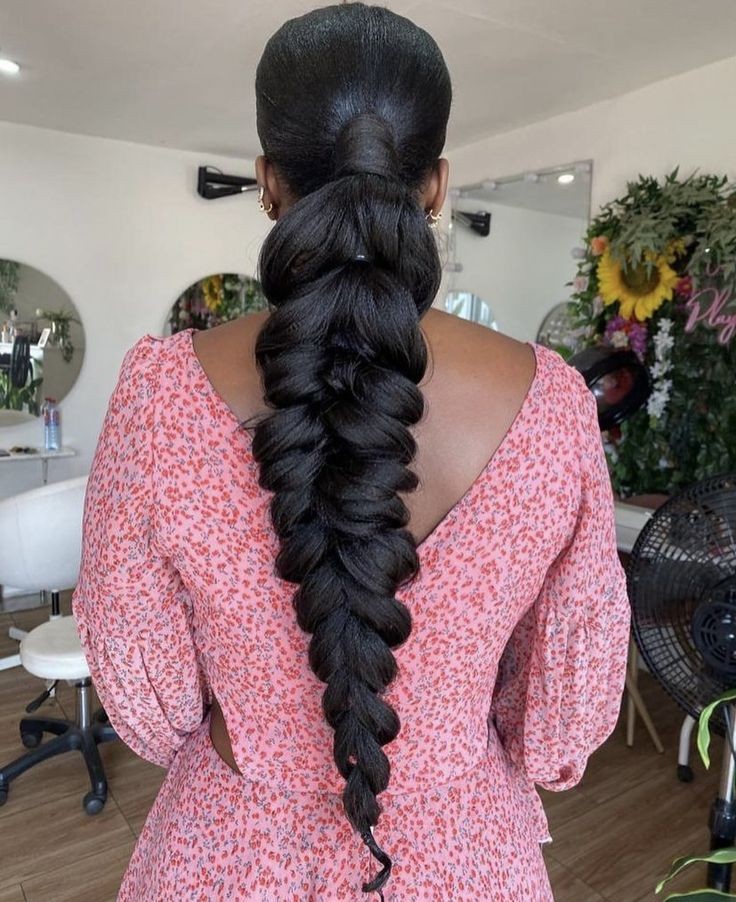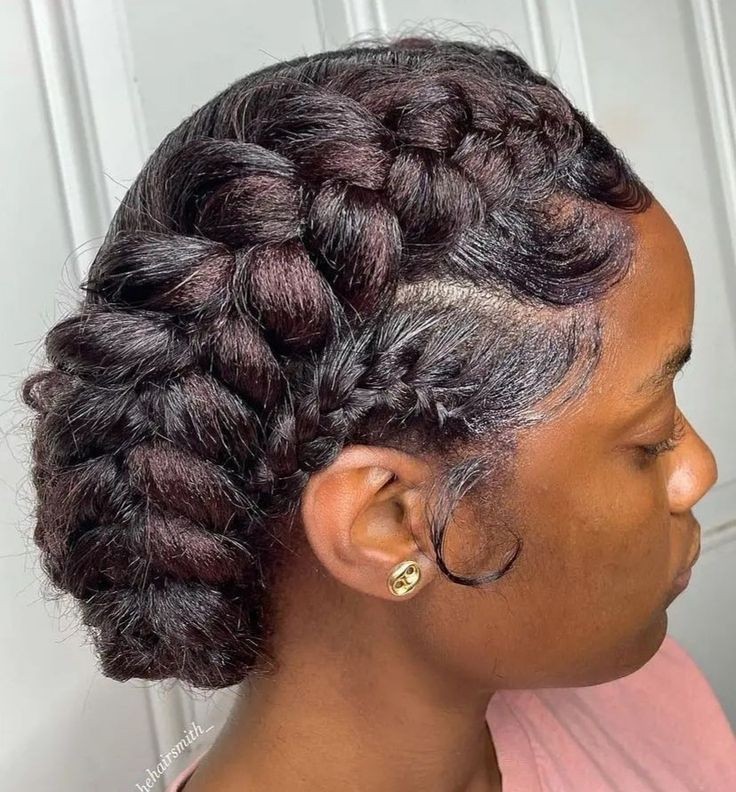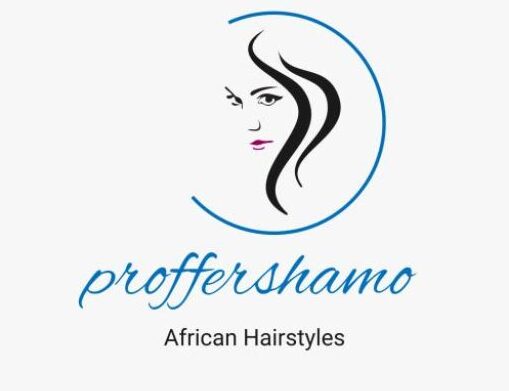Protective braids have been a staple in the African American community for centuries, serving not only as a fashion statement but also as a means of protecting and preserving the health of the hair. These braids, also known as “protective styles,” have gained popularity in recent years among individuals of all ethnicities due to their versatility, low maintenance, and ability to promote hair growth. From box braids to cornrows, protective braids not only offer a stylish look but also provide a protective barrier for the hair against harsh environmental elements and daily manipulation.






In this article, we will explore the benefits of protective braids, their history, and the various styles available, as well as tips for maintaining and caring for them. Whether you are looking to give your natural hair a break, grow out your hair, or simply switch up your look, protective braids are a fantastic option that not only offer a stylish appearance but also promote healthy hair. So, let us delve into the world of protective braids and discover how they can benefit you and your hair.
Protective braids for curly hair
Protective braids for curly hair involve weaving the hair into tight, low-maintenance braids to shield it from environmental stress, reducing breakage and promoting hair health. These braids help prevent tangling, minimize exposure to harsh elements, and retain moisture, fostering optimal conditions for curly hair growth








Protective braids for edges
Protective braids for edges specifically focus on safeguarding the delicate hairline and edges from damage. This involves creating gentle braids or twists along the edges, minimizing tension to prevent breakage and promoting hair growth. Using this technique helps maintain the health and thickness of the hairline while reducing stress on the edges often subjected to styling strain and environmental factors.








Protective braids for natural hair
Protective braids for natural hair involve styling the hair into braids to shield it from damage and promote overall hair health. This technique helps prevent breakage, reduces manipulation of the hair, and retains moisture. By keeping the hair in a protective style, such as braids, twists, or other low-manipulation options, individuals with natural hair can minimize stress on their strands, allowing for better length retention and protection against environmental factors.


Protective ghana braids styles
Protective Ghana braids styles involve creating intricate, small, and close-to-the-scalp braids. These braids, also known as cornrows, are formed by adding extensions for length and styling versatility. Ghana braids often feature geometric patterns, curving designs, or straight lines close to the scalp. The style is considered protective because it keeps the natural hair confined, reducing manipulation and promoting hair growth. It’s essential to ensure that the braids aren’t too tight to prevent tension and damage to the hair and scalp.


Protective knotless braids
Protective knotless braids are a hairstyle where extensions are gradually added as the braid progresses, eliminating the traditional method of starting with a knot. This reduces tension and stress on the scalp, making it a gentler option for hair. These braids create a more natural look, are lightweight, and minimize pulling on the hair.











The technique is considered protective as it reduces the risk of breakage and promotes healthy hair growth, making it a popular choice for those seeking a comfortable and low-maintenance protective style
Jumbo braids protective style
Jumbo braids, a protective style, involve creating larger-sized braids with synthetic or natural hair extensions. These braids are not only stylish but also help protect natural hair by reducing manipulation and limiting exposure to environmental factors. The larger size minimizes tension on the scalp, making it a comfortable choice. Jumbo braids are versatile and can be styled in various ways, offering a protective option for those who prefer a bold and distinctive look while promoting hair health and minimizing breakage.






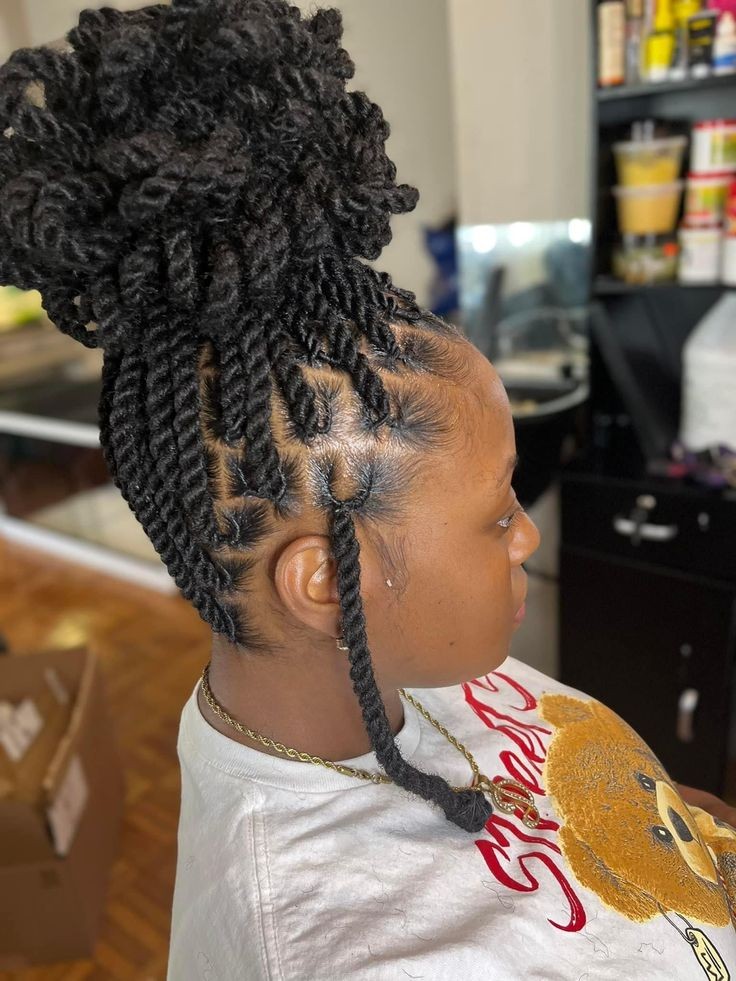

Protective braids for straight hair
Protective braids for straight hair help minimize damage and promote hair health. Choose low-tension styles like box braids or cornrows to prevent breakage. Use a satin or silk scarf at night to preserve the style and reduce friction. Regularly moisturize your scalp and braids to prevent dryness. Avoid leaving braids in for too long to prevent tension on the hair shaft.









Crochet braids protective hairstyles
Crochet braids are a protective hairstyle involving extensions attached to cornrowed hair with a crochet needle. They’re low-maintenance and protect natural hair. Opt for high-quality synthetic or human hair extensions for a natural look. Maintain by washing gently and moisturizing regularly. Take breaks between installations to care for your natural hair and prevent stress on the scalp.








Protective hairstyles for 3b/3c hair
Protective hairstyles for 3b/3c hair include twists, braids, Bantu knots, wigs, and updos. These styles shield hair from daily manipulation, reduce breakage, and help retain moisture. Prioritize proper moisturizing, gentle detangling, and avoiding excessive heat to maintain the health of your natural curls








Feed in braids protective styles
Feed-in braids, a form of protective styling, involve gradually adding extensions for a natural look. This technique reduces tension on the scalp and minimizes breakage. Ideal for various lengths, it offers versatility and can be customized with different braid patterns. Ensure proper care by keeping your scalp moisturized and avoiding excessive tension during installation








Protective braids for 4c hair
Protective braids for 4c hair, like box braids, Senegalese twists, cornrows, and Marley twists, shield hair from damage. These styles reduce manipulation, prevent breakage, and promote hair health. Ensure gentle handling, proper moisturizing, and avoid excessive tension to maintain the well-being of 4c hair during protective braiding.









Chunky braids protective style
Chunky braids make for a stylish and protective choice, especially for 4c hair. These larger-sized braids are low-maintenance, reduce manipulation, and provide a shield against breakage. Moisturize your hair regularly and avoid excessive tension during installation to keep your hair healthy and protected.








Protective hairstyles dutch braids
Dutch braids serve as protective hairstyles, providing numerous advantages for different hair types. Notably, these braids exert low tension on the scalp, minimizing the risk of breakage and promoting overall hair health. Their versatility makes them suitable for varying lengths and textures, offering styling options ranging from individual braids to intricate updos.


To ensure the best results, it’s essential to prioritize proper hair moisturization, maintain a gentle braiding tension, and take care to protect the delicate edges during the Dutch braiding process.
Protective braids for wavy hair
For wavy hair, protective braids are a great option. Consider loose box braids or fishtail braids to minimize stress on your waves. These styles offer protection by reducing daily manipulation, preventing breakage, and preserving moisture.









Opt for braids that align with your natural wave pattern to maintain a seamless and low-maintenance look. Regularly moisturize your hair and protect it at night to ensure the health of your wavy hair during the protective braiding period.
Protective cornrow braids
Protective cornrow braids are an excellent choice for various hair types. Cornrows involve braiding hair close to the scalp in neat, parallel rows. This style reduces manipulation, preventing breakage and promoting hair health.









It’s a versatile option, allowing for various patterns and designs. Ensure a gentle braiding process, proper moisturization, and avoid excessive tension to maintain the well-being of your hair while rocking protective cornrow braids.
Protective braids for caucasian hair
For Caucasian hair, protective braids like boxer braids, fishtail braids, or milkmaid braids offer a stylish option. These braids reduce daily manipulation, preventing breakage and promoting hair health. Ensure gentle handling, avoid excessive tension, and consider using moisturizing products to maintain hair health while enjoying the benefits of protective braids. Adjusting techniques to suit the hair’s characteristics is essential for optimal results.


Protective box braid hairstyles
Protective box braid hairstyles, including medium-length and jumbo styles, offer versatility and minimize daily manipulation for textured hair. Updo variations add flair while protecting ends. Prioritize a gentle braiding process, regular moisturization, and avoid excessive tension for healthy, stylish protective box braids.


Big protective braids
Big protective braids, like jumbo box braids or chunky twists, are a stylish and low-maintenance option for textured hair. These larger braids reduce manipulation, prevent breakage, and allow for creative styling. Ensure a gentle braiding process, maintain proper moisturization, and avoid excessive tension for healthy, attractive big protective braids.









Low-maintenance hairstyles
Low-maintenance hairstyles, such as pixie cuts, bobs, messy buns, embracing natural texture, or opting for braided styles, offer simplicity and ease. These choices minimize daily styling efforts, making them convenient for individuals with a busy routine. Choose a style that aligns with your preferences and requires minimal upkeep for a practical and stylish look.








Healthy hairstyles for black hair
Healthy hairstyles for black hair involve twists, braids, natural styles, low-manipulation updos, and protective styles like box braids. Prioritize moisture, gentle handling, and minimal heat to promote overall hair health


Versatile braids hairstyles
Versatile braids hairstyles offer a range of styling options, suitable for various occasions and hair types. From classic three-strand braids to intricate fishtails or box braids, they provide flexibility in expression. These hairstyles can be adapted for casual, professional, or formal settings, making them suitable for diverse lifestyles.








Additionally, versatile braids are protective, promoting hair health by minimizing breakage and tangling. They cater to individual preferences, allowing for creativity in choosing patterns, lengths, and accessories. Overall, versatile braids are a practical and stylish choice for those seeking adaptability and hair protection.
long-lasting hairstyles for black hair
Protective styles like box braids, twists, or cornrows are popular for long-lasting hairstyles for black hair. These minimize manipulation, reducing the risk of breakage and promoting hair health.











Additionally, sew-in weaves and faux locs offer durability. Proper maintenance, regular moisturizing, and avoiding excessive tension are crucial for preserving the longevity of these styles. Consider natural hairstyles like afros or bantu knots for a balance between longevity and embracing your hair’s texture. Regular trims and a consistent hair care routine contribute to maintaining the health and vibrancy of black hair in any long-lasting style
Formal hairstyles black hair
Formal hairstyles for black hair encompass elegant options like updos, buns, or sleek ponytails. They often incorporate elements such as twists, braids, or smooth styling to achieve a polished look.









These hairstyles are suitable for formal events, professional settings, or special occasions, adding sophistication to black hair. Incorporating accessories like hairpins or headpieces can enhance the formal aesthetic. Proper preparation, including moisturizing and careful styling, ensures a refined and lasting appearance for formal occasions with black hair.
Chignon hairstyles for black women
Chignon hairstyles for black women involve creating a low bun at the nape of the neck. This elegant and timeless style is versatile, suitable for both casual and formal settings. For black women, chignons can be customized with twists, braids, or natural curls to add flair and reflect individual style.










This sophisticated updo complements various face shapes and is appreciated for its simplicity and grace, making it a go-to choice for chic and polished looks.
Casual hairstyles for black hair
Casual hairstyles for black hair include options like afros, twist-outs, bantu knots, or simple ponytails. These styles embrace natural texture while offering versatility for everyday wear. Low-maintenance options such as wash-and-go styles or protective looks like box braids are also popular.









Accessories like headbands or scarves can add a playful touch. The key is to balance comfort and style, allowing for easy maintenance while showcasing the beauty of black hair in a relaxed, everyday fashion.
Winter hairstyles for black hair
Winter hairstyles for black hair often focus on protective styles to combat harsh weather. Options include braided styles like box braids, twists, or crochet braids, which shield hair from cold and dry conditions. Additionally, natural styles like twist-outs or bantu knots are popular, providing a chic and cozy look. Deep conditioning and moisturizing are essential during winter to prevent dryness. Beanies, scarves, or headwraps can complement these hairstyles, adding warmth and style.


Overall, winter hairstyles for black hair prioritize protection, moisture, and a fashionable flair suitable for the season
Benefits of wearing protective braids.
Wearing braids as a protective hairstyle offers numerous benefits for individuals looking to maintain the health and integrity of their hair. One advantage of opting for protective braids is the reduced manipulation and styling required on a daily basis. This can help prevent damage caused by excessive heat styling, chemical treatments, and constant brushing or combing. Additionally, protective braids can shield the hair from environmental stressors such as harsh weather conditions and pollution, minimizing the risk of breakage and promoting hair growth.


By keeping the hair neatly braided and tucked away, individuals can also experience less tangling and knotting, leading to easier detangling sessions and overall improved manageability. Overall, protective braids offer a practical way to protect and preserve the health of one’s hair, while still maintaining a stylish and versatile appearance.
Low maintenance, high protection: the perfect combination.
When it comes to maintaining the health and vitality of your hair, finding a hairstyle that strikes the perfect balance between low maintenance and high protection is essential. It is crucial to choose a style that not only requires minimal effort to maintain but also provides optimal protection against external factors that can damage your hair.
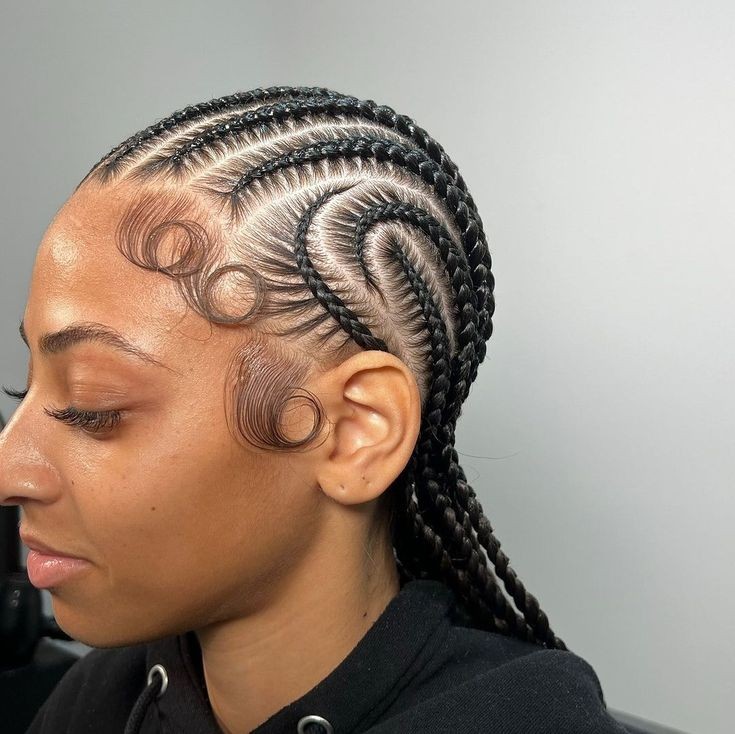

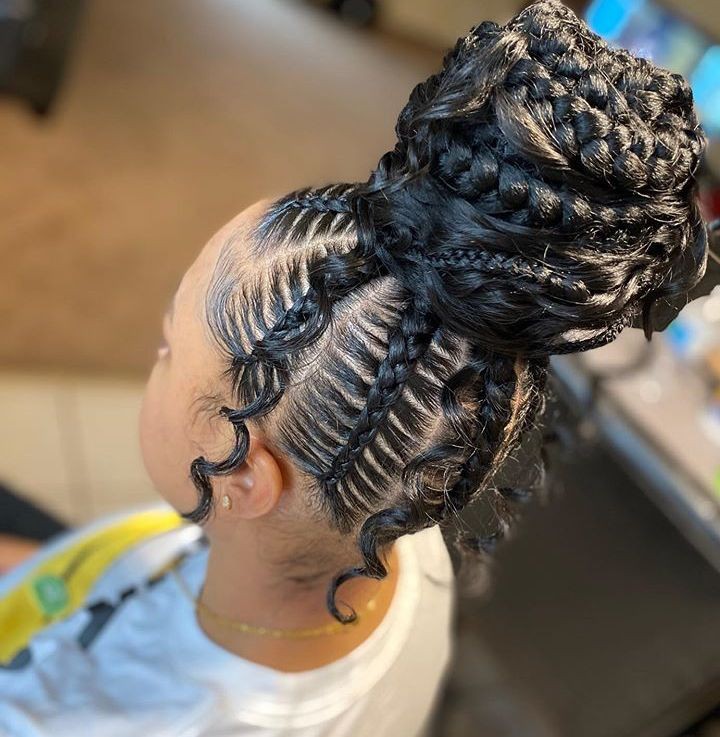



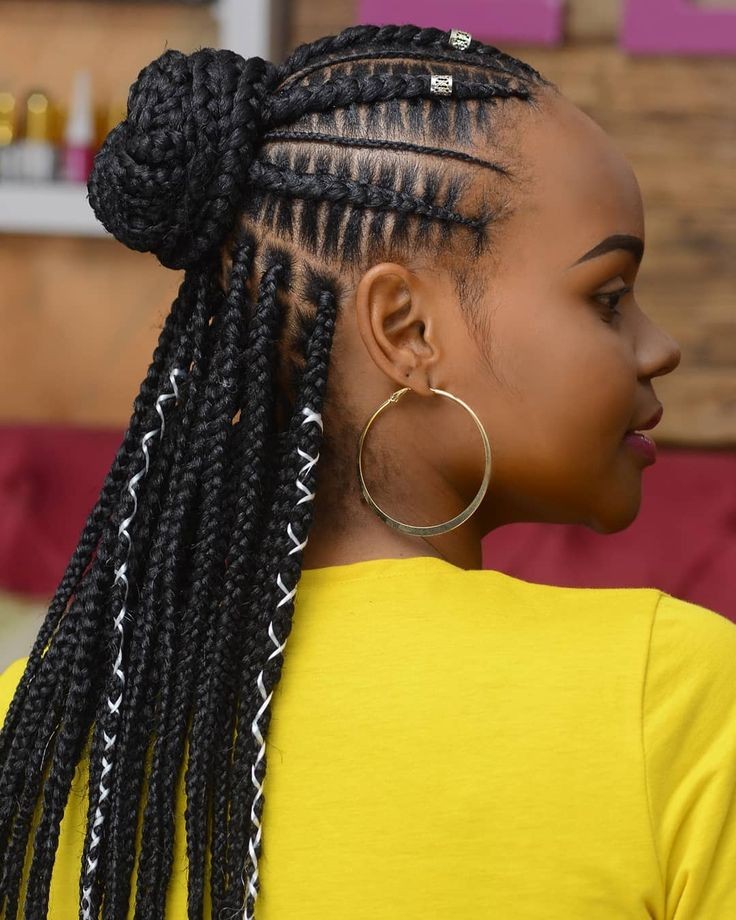

This combination is the key to ensuring that your hair remains strong, healthy, and resilient. Whether you opt for braids, twists, or other protective styles, selecting a hairstyle that offers low maintenance and high protection will not only save you valuable time and effort but also serve as a shield against the damaging effects of heat, styling tools, and environmental factors. By embracing this perfect combination, you can enjoy the benefits of effortlessly beautiful hair while safeguarding its health and integrity.
How to properly prep hair for braiding.
To ensure a successful and long-lasting braided hairstyle, proper preparation of the hair is crucial. Start by thoroughly detangling your hair using a wide-toothed comb or a detangling brush. This step is essential as it helps to minimize breakage and prevent unnecessary pulling or tugging during the braiding process. Next, cleanse your hair using a gentle shampoo, focusing on the scalp to remove any buildup or dirt.









Follow up with a moisturizing conditioner to restore hydration and nourishment to your strands. Once you’ve rinsed out the conditioner, gently towel-dry your hair to remove excess water without causing frizz or damage. Before braiding, apply a leave-in conditioner or a lightweight hair oil to provide added moisture and to make your hair more manageable. Finally, divide your hair into sections, securing them with clips or elastics to make the braiding process more organized and efficient. By following these steps, you can ensure that your hair is well-prepared for braiding, resulting in a beautiful and protective hairstyle.
Choosing the right type of braids for your hair type.
When it comes to choosing the right type of braids for your hair type, it’s important to consider factors such as texture, length, and desired style. For those with fine or thin hair, smaller and tighter braids may be more suitable to create the illusion of volume and fullness. On the other hand, individuals with thick or coarse hair can opt for larger, chunkier braids for a bolder and more dramatic look.











Additionally, if you have natural curls or waves, you may want to consider braiding techniques that enhance and define your natural texture, such as twist braids or bantu knots. It’s also worth noting that braided hairstyles can vary in complexity, ranging from simple three-strand braids to intricate cornrows or box braids. Ultimately, the key is to choose a braiding style that not only compliments your hair type but also aligns with your personal style preferences and maintenance routine.
Avoiding tension and damage: braiding techniques to know.
To maintain the health and integrity of your hair while rocking protective braids, it’s crucial to employ techniques that minimize tension and prevent damage. One technique to consider is called “feed-in braiding,” where small sections of extension hair are gradually incorporated into the braid, reducing strain on your natural hair.








Another method is “loose braiding,” which involves creating looser and less tightly pulled braids to alleviate stress on the hair follicles. “Scalp massages” before and after braiding can also stimulate blood circulation and promote healthy hair growth. Additionally, using a satin or silk scarf or pillowcase while sleeping can help to reduce friction and prevent breakage. By implementing these precautionary techniques, you can enjoy the benefits of protective braiding while safeguarding the health of your hair.
Protective braids for natural hair: a game changer.
Protective braids have revolutionized the way individuals with natural hair care for and style their tresses. These braids not only provide a stunning and versatile look but also offer significant benefits in terms of hair health and maintenance. By shielding the fragile ends of natural hair from daily manipulation and exposure to harsh elements, protective braids help to retain moisture, minimize breakage, and promote hair growth.








Moreover, the low-maintenance nature of these braids allows individuals to embrace their natural texture without the need for constant heat styling or chemical treatments, resulting in healthier and more resilient hair over time. With the myriad of creative styles and techniques available, protective braids have truly become a game changer in the realm of natural hair care.
The best products to use on braided hair.
When it comes to caring for braided hair, using the right products is essential to maintain and enhance the health and longevity of the style. Moisture is key, so incorporating a leave-in conditioner specifically formulated for braids can help to hydrate and nourish both the scalp and the hair strands. Look for lightweight, non-greasy formulas that won’t weigh down your braids. Additionally, using an oil or serum designed to moisturize and seal the hair cuticles can help to prevent frizz and add shine. Avoid products that contain heavy silicones or alcohol, as they can lead to product buildup and dry out your braids.








Investing in a gentle scalp cleanser or dry shampoo can also be beneficial for refreshing and eliminating any buildup or oiliness between washes. Finally, don’t forget to protect your braids while you sleep by using a satin or silk bonnet or pillowcase to minimize friction and preserve the style. By using these recommended products, you can ensure that your braided hair stays healthy, vibrant, and stunning throughout its duration.
Maintaining healthy hair while braided.
To maintain healthy hair while braided, it is important to adopt a regular care routine that focuses on moisturizing and protecting the hair and scalp. Start by gently washing your braids with a sulfate-free shampoo, taking care to massage the scalp to remove any buildup or debris. Follow up with a hydrating conditioner that can be applied to the length of the hair, focusing on the ends which can become dry and brittle. It is advisable to avoid excessive manipulation or pulling on the braids to prevent any unnecessary tension or breakage. To combat dryness, apply a lightweight, leave-in conditioner or hair oil to the scalp and the braids, ensuring that the product is evenly distributed.








Additionally, regularly moisturize the hair and scalp by spritzing with a mixture of water and aloe vera juice or a moisturizing spray. Remember to protect your braids at night by covering them with a satin or silk scarf or using a satin or silk pillowcase to prevent friction and minimize damage. By following these practices, you can maintain healthy hair while enjoying the stylish and protective benefits of braids.
Styling options for braided hair.
When it comes to styling options for braided hair, the possibilities are endless. One popular option is to accessorize the braids with beads, cuffs, or colorful wraps for a unique and eye-catching look. Another option is to experiment with different braid patterns, such as cornrows, box braids, or twist braids, to create a variety of styles.


Braided hair can also be styled into updos, ponytails, or half-up half-down hairstyles for a more elegant and polished appearance. For those who prefer a more natural look, leaving the braids loose and allowing them to fall freely can create a bohemian and carefree vibe. Whatever style you choose, it is important to ensure that the braids are not pulled too tightly or styled in a way that causes discomfort or damage to the hair and scalp. Additionally, regularly moisturizing and conditioning the braids will help to keep them looking fresh and prevent them from becoming dry or brittle.
Removing braids without damaging hair.
To safely remove braids without causing damage to the hair, it’s important to proceed with care and patience. Begin by applying a moisturizing oil or detangling spray to the braids to help soften and loosen them. Gently work through the braids with your fingers or a wide-tooth comb, starting from the bottom and working your way up towards the roots. Avoid using excessive force or pulling on the hair, as this can lead to breakage or hair loss. If you encounter any stubborn knots or tangles, take your time to gently untangle them using your fingers or a detangling tool. Once all the braids have been loosened, wash and condition the hair to remove any product buildup or residue. Lastly, it’s crucial to give your hair a break before re-braiding to allow it time to rest and recover from the tension and manipulation of the previous style.








In conclusion, protective braids are a versatile and practical hairstyle that can benefit anyone looking to protect their natural hair from damage or promote growth. With various styles to choose from and the added convenience of low maintenance, it’s no wonder that protective braids have become a popular choice among individuals of all ages and backgrounds. Whether you’re looking to switch up your look or simply give your hair a break, protective braids are a great option to consider. So next time you’re in need of a hairstyle that not only looks great but also keeps your hair healthy, give protective braids a try.
